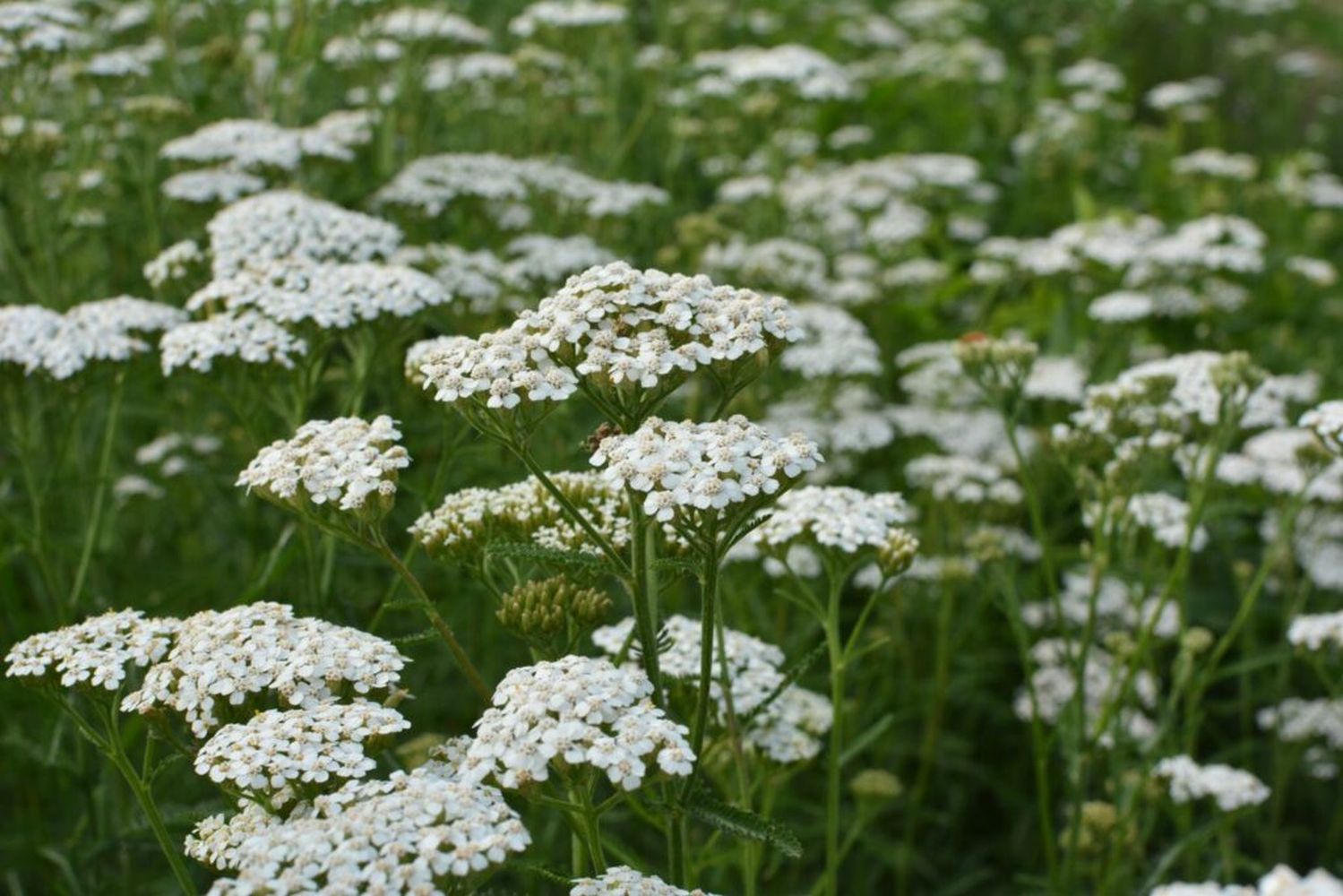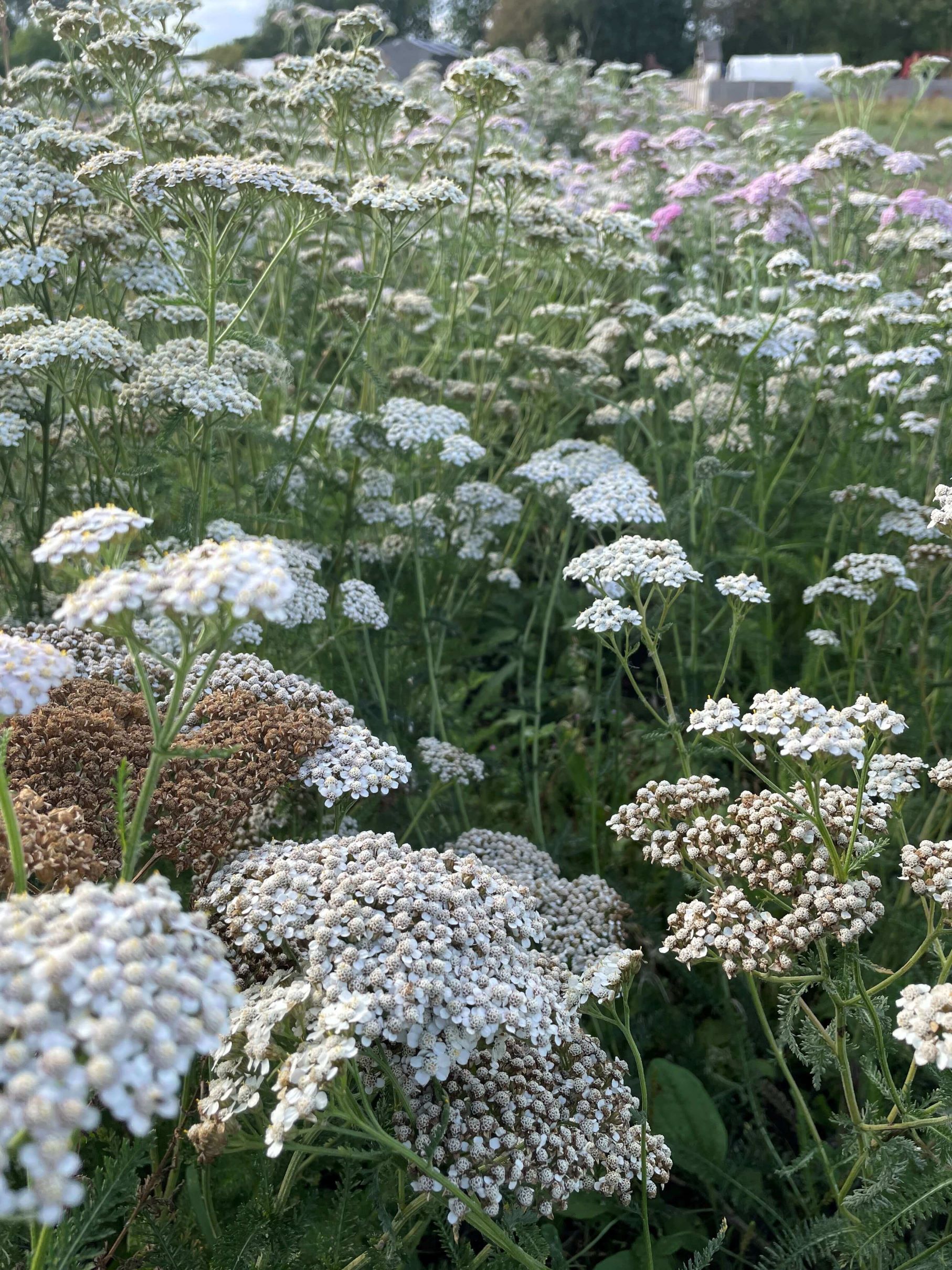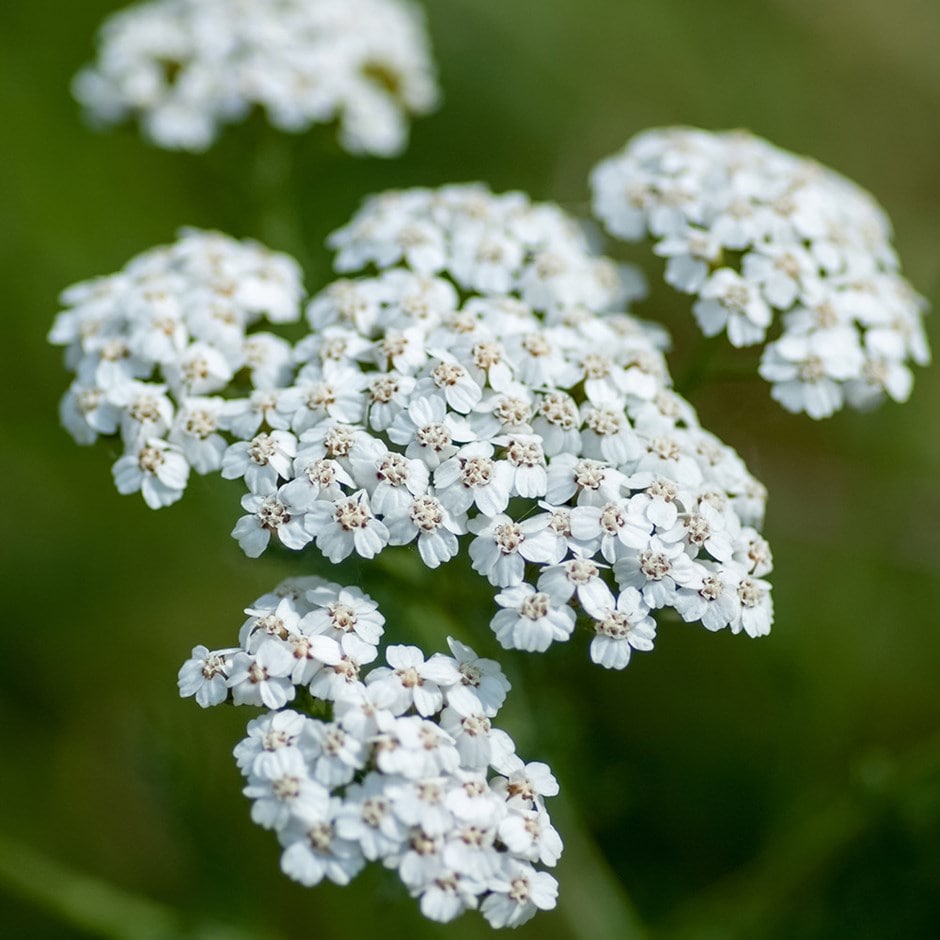Yarrow: A Versatile Herb with a Rich History
Yarrow (Achillea millefolium), a perennial flowering plant belonging to the Asteraceae family, has a long and fascinating history intertwined with human civilization. Its common name, “yarrow,” is believed to derive from the Greek hero Achilles, who, according to legend, used the plant to staunch the bleeding wounds of his soldiers during the Trojan War. This ancient association hints at one of yarrow’s most celebrated properties: its ability to stop bleeding.
Beyond its historical significance, yarrow boasts a remarkable versatility, finding applications in various domains, including traditional medicine, culinary arts, and even dyeing. This article delves into the multifaceted world of yarrow, exploring its history, characteristics, medicinal uses, culinary applications, and other interesting aspects.
A Tapestry of Common Names

Yarrow has accumulated a rich tapestry of common names throughout history, reflecting its diverse uses and cultural significance. Some of the more prominent ones include:
Milfoil: This name, derived from the Latin “millefolium,” which translates to “thousand leaves,” aptly describes the plant’s finely divided, fern-like foliage.
Botanical Characteristics
Yarrow is a herbaceous perennial characterized by its:

Basal rosette of leaves: A cluster of finely divided, fern-like leaves grows close to the ground.
Habitat and Distribution
Yarrow is a highly adaptable plant, thriving in a wide range of habitats across temperate regions of the Northern Hemisphere. It can be found in:
Meadows and pastures

Its ability to colonize diverse environments contributes to its widespread distribution.
History and Folklore
Yarrow’s history is deeply intertwined with human civilization, dating back to ancient times.
Ancient Greece: As mentioned earlier, Greek mythology associates yarrow with Achilles, highlighting its use in wound healing.
Medicinal Uses
Yarrow has been traditionally used to address a wide range of health concerns. Some of its purported medicinal properties include:
Anti-inflammatory: Yarrow contains compounds with anti-inflammatory properties that may help reduce inflammation associated with conditions like arthritis and muscle aches.
Culinary Uses
Although less common today, yarrow has a history of culinary use in some cultures.
Leaves: Young leaves can be added to salads, soups, and stews for a slightly bitter and pungent flavor.
Other Uses
Dyeing: Yarrow flowers can be used to dye textiles, producing shades of yellow or green.
Cultivation
Yarrow is a relatively easy plant to cultivate.
Sunlight: Prefers full sun but can tolerate partial shade.
Harvesting and Preparation
Harvesting: The aerial parts of the plant, including leaves and flowers, are typically harvested during the flowering stage.
Cautions and Considerations
Allergic reactions: Some people may experience allergic reactions to yarrow, such as skin irritation or hay fever.
Conclusion
Yarrow, with its rich history, diverse uses, and adaptability, remains a fascinating and valuable plant. From its traditional medicinal applications to its potential culinary and ornamental uses, yarrow continues to offer a wealth of possibilities. However, it is crucial to approach the use of yarrow with caution and consult with a qualified healthcare professional before using it for medicinal purposes.
This article provides a comprehensive overview of yarrow, covering its history, characteristics, medicinal uses, culinary applications, and other interesting aspects. It aims to provide readers with a deeper understanding of this versatile plant and its potential benefits.
